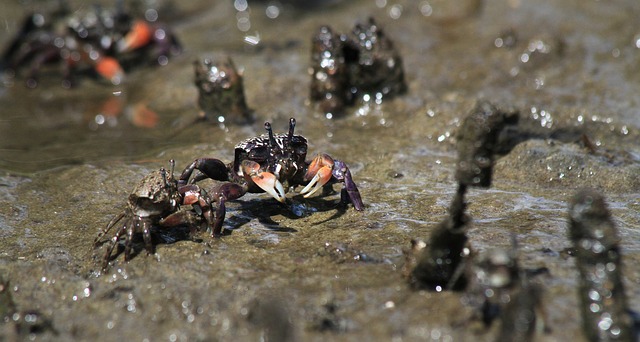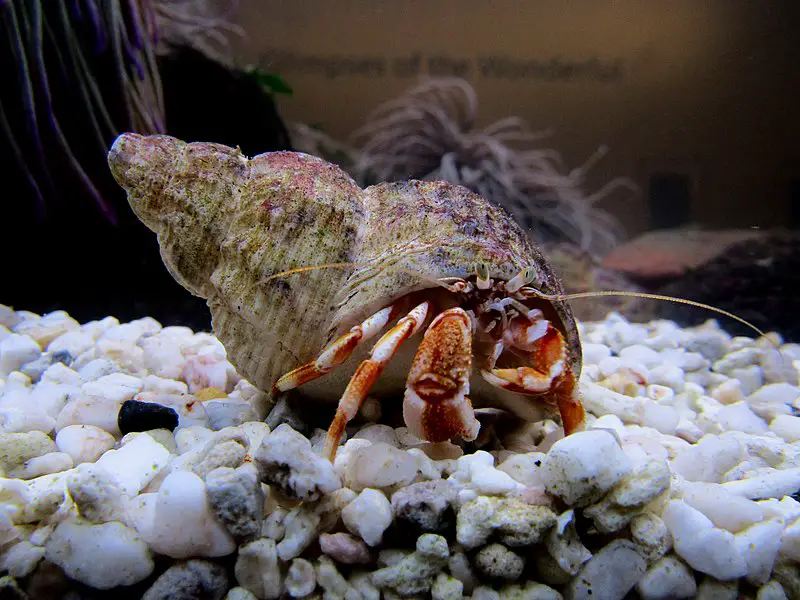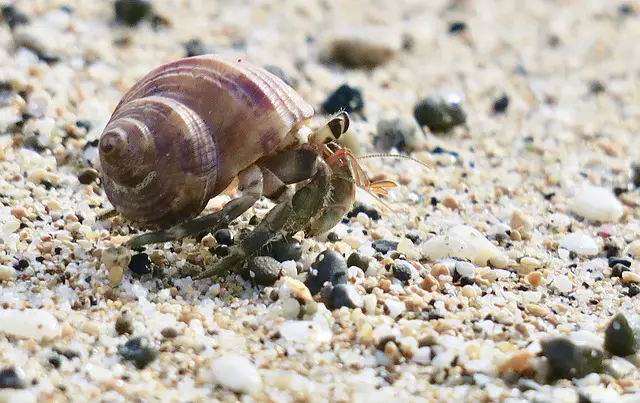The power and potential danger of mud crab bites have long been the subject of waterfront tales and nervous beachside conversations. These marine critters are infamous for their menacing claws and the folklore of their supposed finger-snipping capabilities.
In the quest to separate fact from fiction, a closer examination of mud crab behavior and bite strength is essential for understanding the real risks posed during crab attacks. While it is rare for these crustaceans to cause finger injury to the extent of amputation, their pincers are no tools to scoff at.
Marine enthusiasts and casual beachgoers seek effective finger safety tips and strategies for avoiding crab attacks. The key is in recognizing that while mud crab bites can be painful and daunting, proper finger protection can prevent most serious injuries.
With thoughtful precautions in place, the perceived crab danger diminishes, allowing for safer interactions with these fascinating but feisty members of the aquatic realm.
Human and Crab Interactions
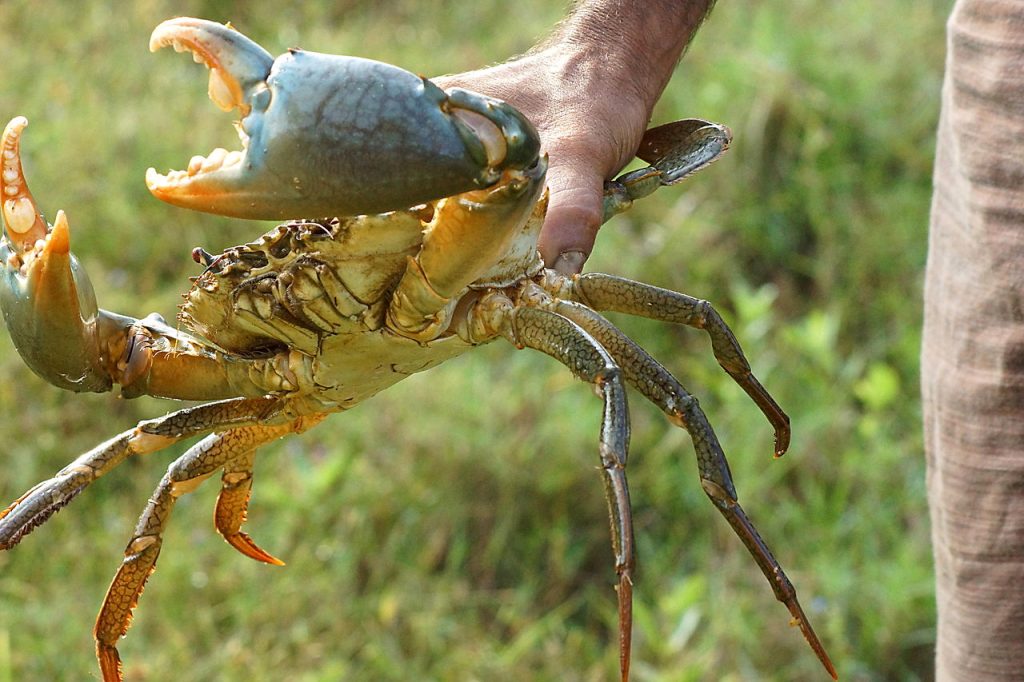
Exploring the intricate interactions between humans and mud crabs opens up a dialogue about crab behavior’s fascinating and sometimes perilous nature.
Understanding and mitigating the risks can lead to safer, more respectful engagements with these powerful marine creatures.
The Risks of Interacting with Mud Crabs
Approaching or handling mud crabs without proper knowledge or mud crab safety precautions can put individuals at risk of painful injuries.
Their strong pinch can deliver more than just a sharp sting; it can lead to serious hand safety concerns, including severe bruising or bone fractures, if not handled with care.
What to Do If a Mud Crab Pinches You
Resting calm is crucial if a mud crab’s fierce grip finds your fingers. Avoid shaking your hand, as this could worsen the injury. Instead, submerging the crab back into the water may encourage the creature to release its hold, preventing further finger injuries from mud crabs.
Medical Considerations in Crab Pinches
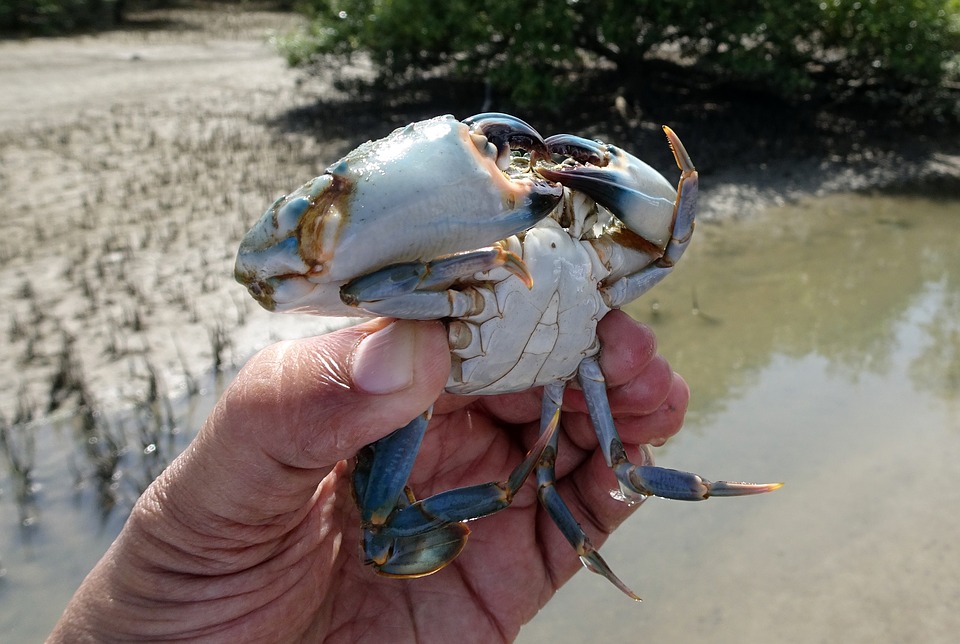
Following a mud crab attack, seeking medical attention is imperative, especially if the pinch breaks the skin or causes significant pain. Medical professionals can assess for fractures, lacerations, or nerve damage, ensuring that preventing finger injuries from mud crabs extends beyond the initial encounter.
Handling Mud Crabs Safely
Use thick gloves and confidently grasp the crab from behind, avoiding the pincers, to minimize the chance of an attack. Safe handling techniques are vital when interacting with mud crabs in any setting, whether during a catch on the shore or within aquatic center environments.
Best Practices for Handling and Protection
Employing best practices such as using proper tools and protective gear, learning from experts, and always handling the crabs with respect can all contribute to finger safety when dealing with these creatures. Being educated and prepared is the cornerstone of hand safety around mud crabs.
Respecting Crab Territory: Avoiding Unnecessary Confrontations
By understanding and respecting the natural habitat and behaviors of mud crabs, unwanted interactions can be mitigated. Remember, mud crabs typically pinch out of a defensive response, not aggression.
Careful movements and observation can steer one clear of inadvertent mud crab attacks and contribute to harmonious human-crab coexistence.
Mud Crabs’ Natural Habitat and Behavior
Delving into the natural habitat and behavior of mud crabs reveals a complex world where survival often hinges on their ability to navigate territorial disputes and environmental changes.
Understanding these factors is crucial for those seeking insights into staying safe around mud crabs and implementing mud crab bite prevention strategies.
Territoriality Among Mud Crabs
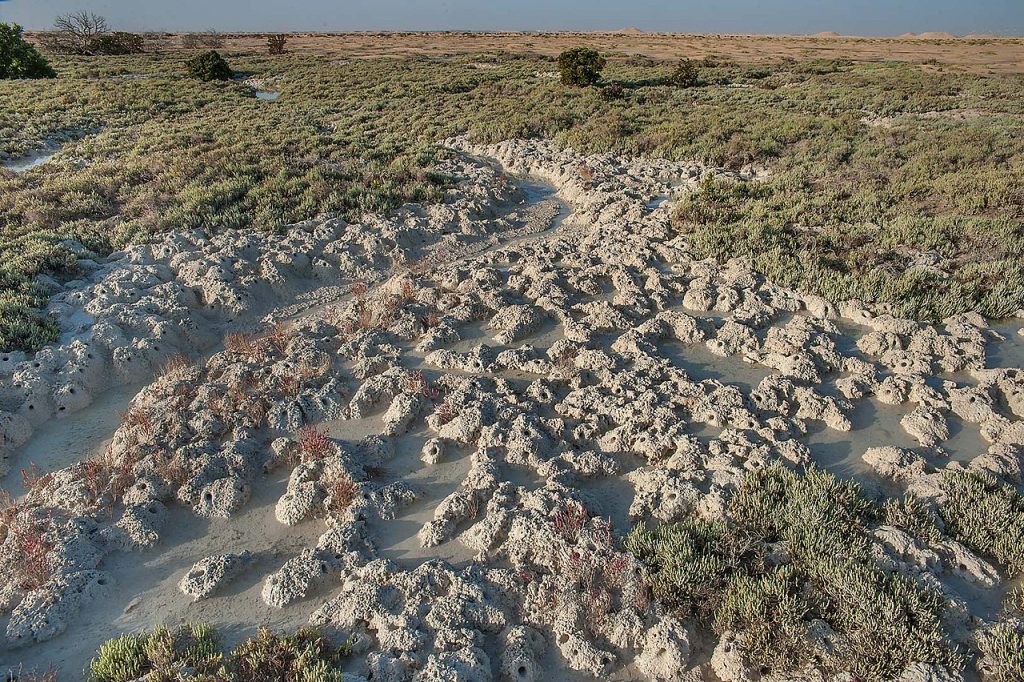
Mud crab behavior takes a fascinating turn when it comes to their territorial instincts. In confinement, these dangerous mud crabs exhibit heightened aggression towards fellow tankmates, often resulting in conflicts that could lead to finger injuries for the unwary.
This behavior underscores the importance of respecting their space, even more so in captive environments.
Mud Crab Behavior in the Wild vs. Captivity
Contrasting sharply with their captive behavior, mud crabs in the wild showcase a more harmonious existence, thriving in large groups without incessant conflict, provided ample space and food are available. This dichotomy highlights their adaptability and the importance of the environment in influencing mud crab behavior.
Mud Crabs in Winter: Behavioral Changes
Winter brings about a marked shift in mud crab behavior. While the females migrate to hatch their offspring, the males remain in their familiar haunts.
Contrary to the belief that they hibernate, mud crabs remain active but less visible, often leading to unexpected encounters. Recognizing these seasonal patterns aids in avoiding surprises that could lead to crab finger amputation stories.
Concluding Insights
The power of mud crabs, with their intimidating claws and potential for pain, has spawned alarming anecdotes throughout Australia’s coastal communities.
Yet, the fear of falling victim to a finger amputation by these formidable crustaceans is largely unfounded. While tales of harrowing experiences and near misses circulate, they mostly remind us of the caution and respect these marine animals command.
Debunking the Myth
It is clear that the danger of mud crab bites, while real, has perhaps been dramatized beyond necessity. Research and evidence suggest that, under normal circumstances, a mud crab’s pincer falls short of severing a human digit.
Nonetheless, finger injury by mud crabs is no laughing matter; their clutch can inflict significant harm, requiring immediate medical attention. Understanding mud crab safety precautions and mastering the art of handling mud crabs safely can mitigate many of the risks associated with these encounters.
Further Reading and Resources for Crab Enthusiasts
For those interested in delving deeper into the world of crabbing or simply intending to venture into the habitat of these creatures, a wealth of information lies in wait. The knowledge base is extensive, from scientific studies on crab behavior and strength to crab catch and release guides.
By harnessing these resources, enthusiasts and the merely curious can be well-equipped to navigate the waters of crab-human interaction with confidence and care.

